
How to Use MQ-7 SENSOR CARBON MONOXIDE GAS: Examples, Pinouts, and Specs
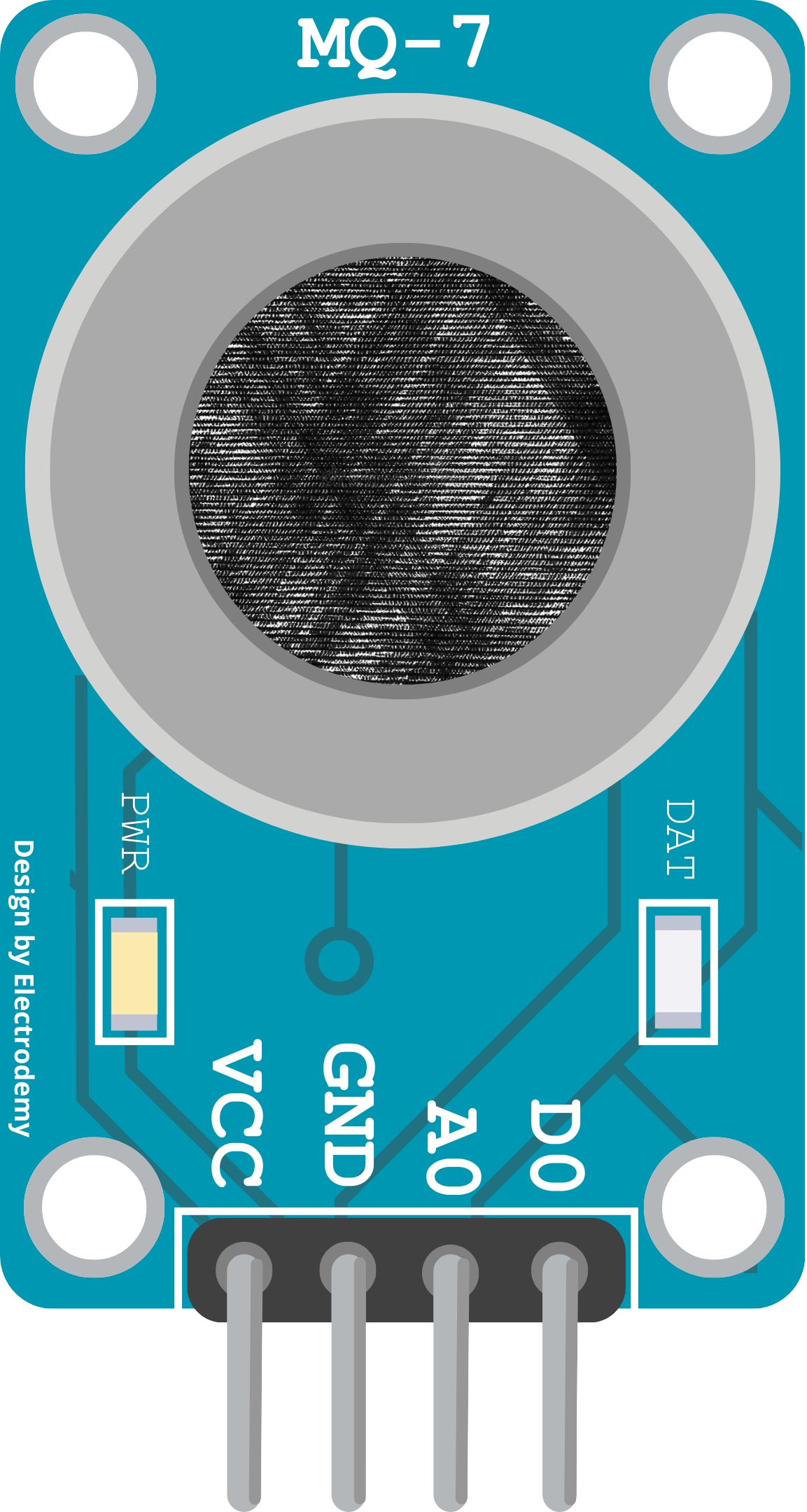
 Design with MQ-7 SENSOR CARBON MONOXIDE GAS in Cirkit Designer
Design with MQ-7 SENSOR CARBON MONOXIDE GAS in Cirkit DesignerIntroduction
The MQ-7 sensor module is an electronic device used for detecting the presence of carbon monoxide (CO) gas in the air. Carbon monoxide is a colorless, odorless, and tasteless gas that can be harmful when inhaled in large quantities, making the MQ-7 an essential component for safety in environments where CO gas could be present. Common applications include home safety, industrial monitoring, and environmental sensing.
Explore Projects Built with MQ-7 SENSOR CARBON MONOXIDE GAS
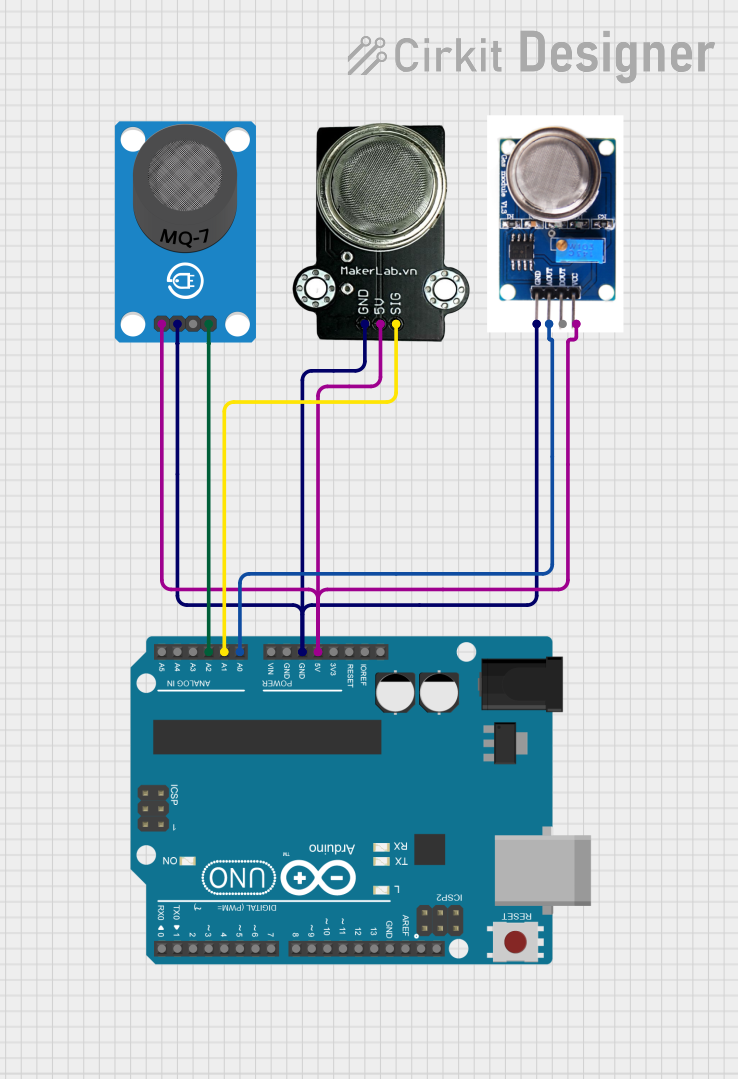
 Open Project in Cirkit Designer
Open Project in Cirkit Designer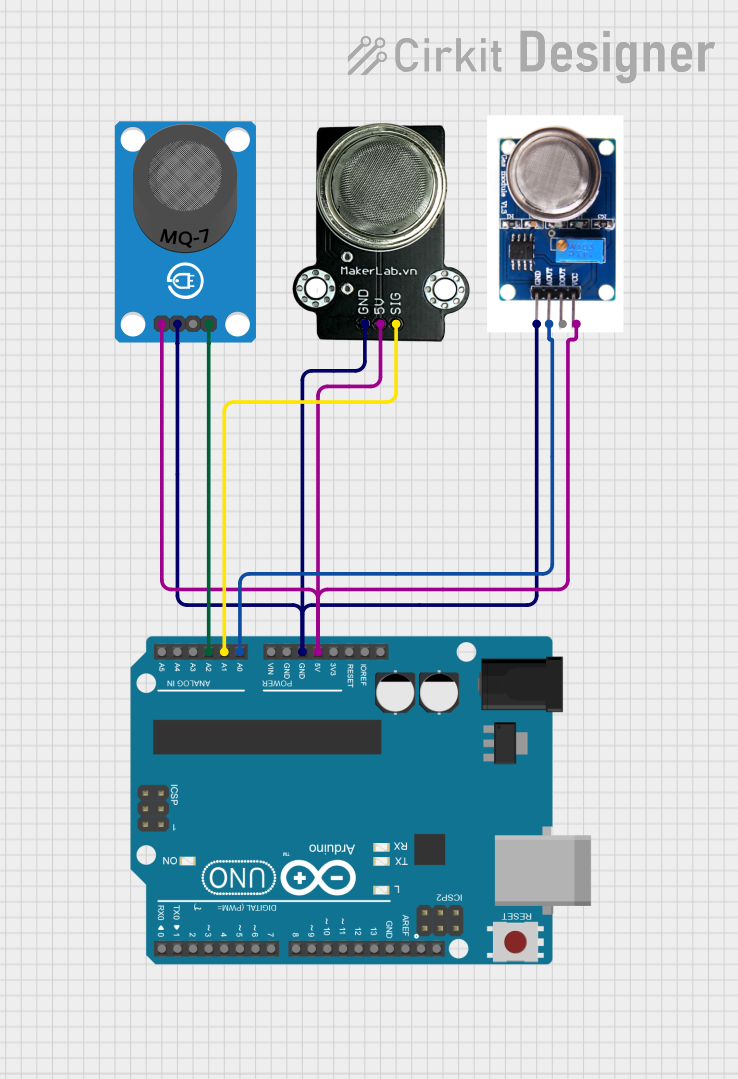
 Open Project in Cirkit Designer
Open Project in Cirkit Designer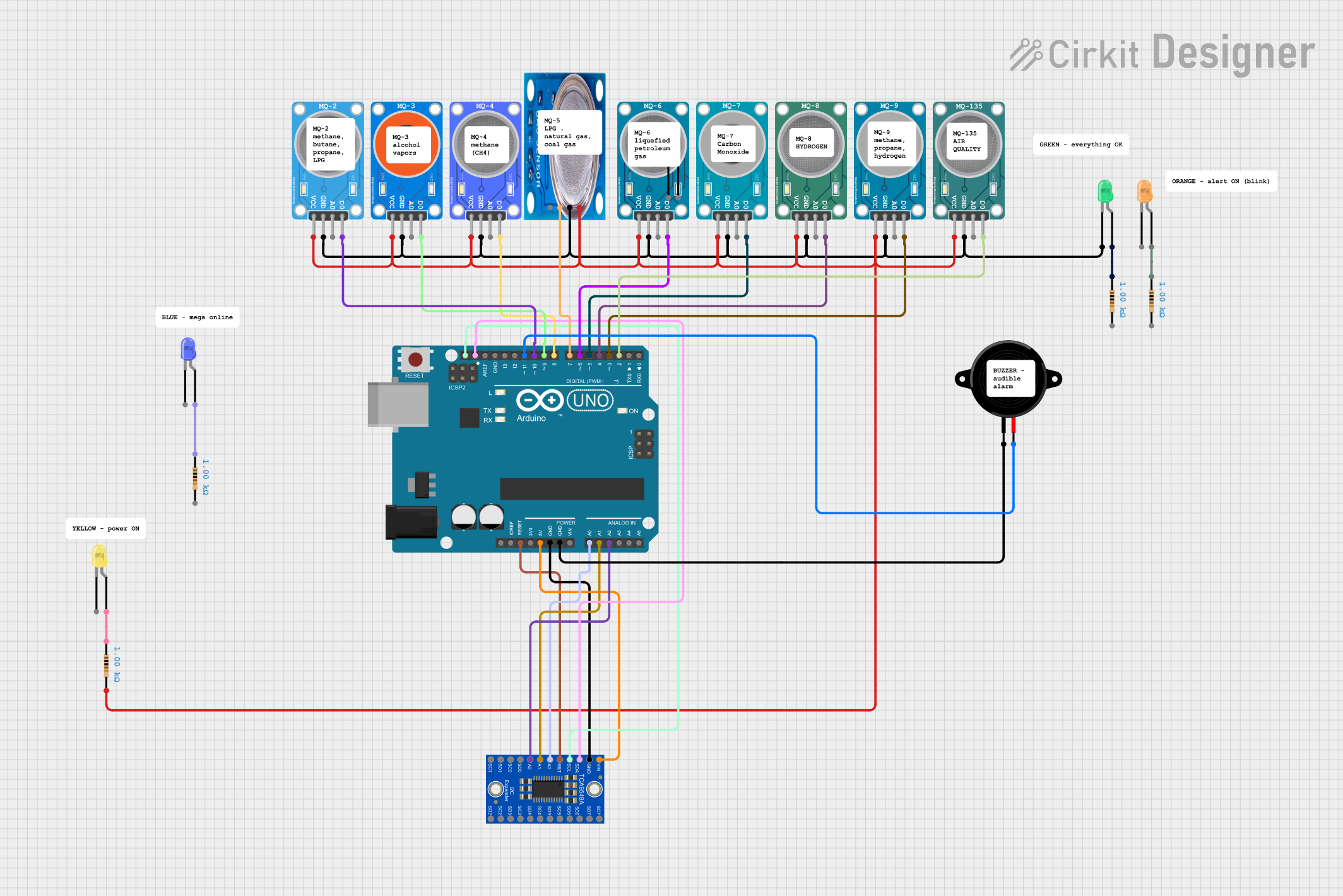
 Open Project in Cirkit Designer
Open Project in Cirkit Designer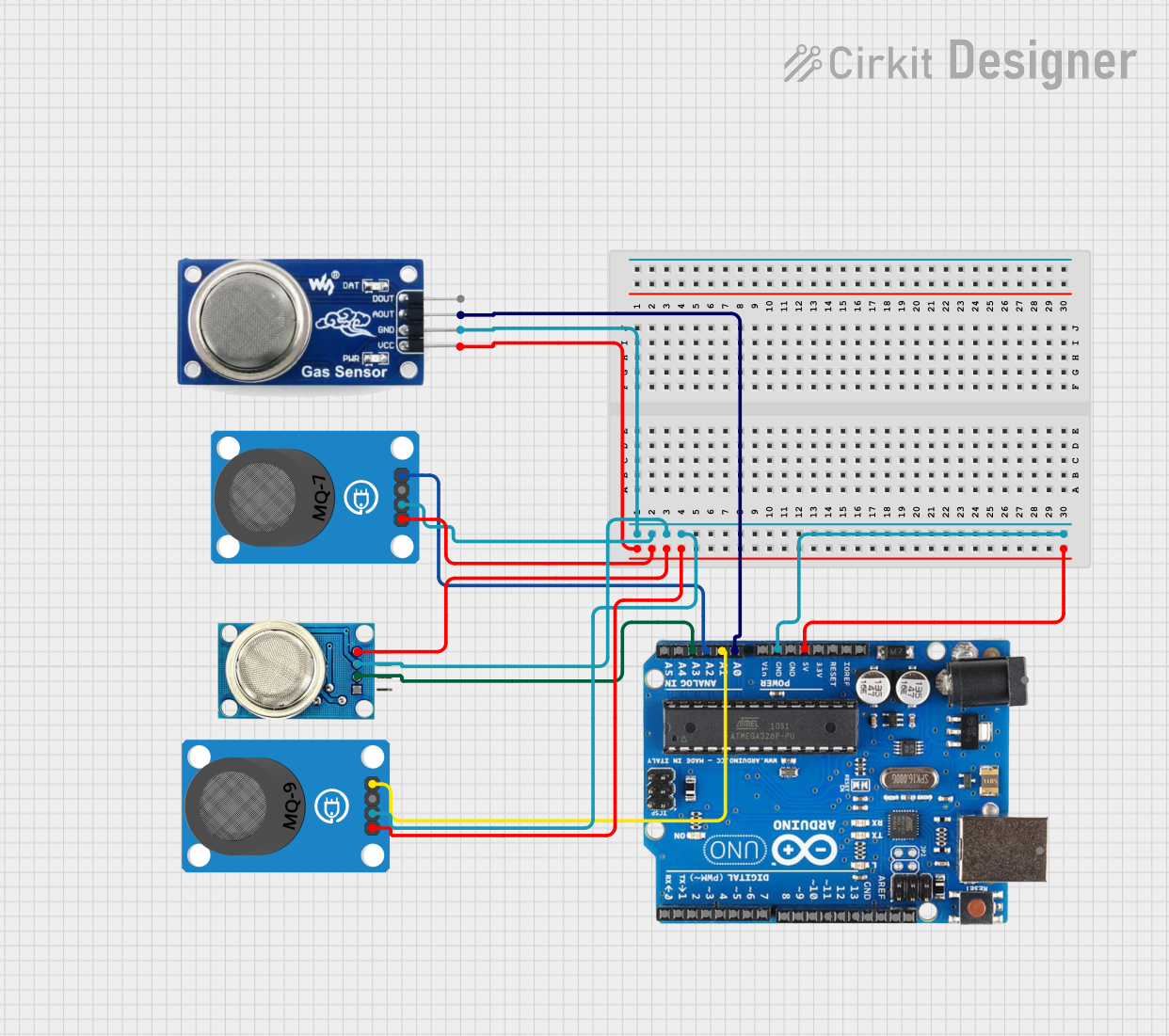
 Open Project in Cirkit Designer
Open Project in Cirkit DesignerExplore Projects Built with MQ-7 SENSOR CARBON MONOXIDE GAS

 Open Project in Cirkit Designer
Open Project in Cirkit Designer
 Open Project in Cirkit Designer
Open Project in Cirkit Designer
 Open Project in Cirkit Designer
Open Project in Cirkit Designer
 Open Project in Cirkit Designer
Open Project in Cirkit DesignerTechnical Specifications
Key Technical Details
- Target Gas: Carbon Monoxide (CO)
- Detection Range: 20 to 2000 ppm CO gas
- Supply Voltage (Vcc): 5V ± 0.1
- Heater Voltage (VH): 5V (high), 1.4V (low)
- Load Resistance (RL): Adjustable
- Heater Resistance (RH): 31Ω ± 3Ω (at room temperature)
- Heater Power Consumption: Approx. 350mW
- Operating Temperature: -10°C to 50°C
- Sensitivity: Rs (in air)/Rs (in 100ppm CO) ≥ 5
Pin Configuration and Descriptions
| Pin Number | Pin Name | Description |
|---|---|---|
| 1 | VCC | Power supply (5V) |
| 2 | GND | Ground |
| 3 | DOUT | Digital output (TTL logic level) |
| 4 | AOUT | Analog output (proportional to CO level) |
Usage Instructions
Integration with a Circuit
To use the MQ-7 sensor module in a circuit:
- Connect the VCC pin to a 5V power supply.
- Connect the GND pin to the ground of the power supply.
- The AOUT pin provides an analog voltage output that is proportional to the concentration of CO gas. Connect this pin to an analog input on your microcontroller.
- The DOUT pin provides a digital signal when the CO concentration reaches a certain threshold. This threshold can be set using the onboard potentiometer. Connect DOUT to a digital input on your microcontroller if you wish to use the digital output.
Important Considerations and Best Practices
- Preheat the sensor for at least 48 hours before initial use for accurate readings.
- Avoid exposure to high concentrations of organic solvents, silicon compounds, and sulfur.
- The sensor's sensitivity changes with temperature and humidity, so calibrate it under the same conditions as it will be used.
- The analog output requires calibration against a known concentration of CO to determine the sensor's response curve.
Example Code for Arduino UNO
// MQ-7 Carbon Monoxide Sensor Example Code
int analogPin = A0; // Analog input pin connected to AOUT on the sensor
int digitalPin = 2; // Digital input pin connected to DOUT on the sensor
int sensorValue = 0; // Variable to store the sensor value
void setup() {
Serial.begin(9600); // Initialize serial communication at 9600 baud
pinMode(digitalPin, INPUT); // Set the digital pin as input
}
void loop() {
sensorValue = analogRead(analogPin); // Read the analog value from sensor
Serial.print("Analog CO value: ");
Serial.println(sensorValue); // Print the analog value
if (digitalRead(digitalPin) == HIGH) {
// Check if the digital output is high
Serial.println("CO level is HIGH!");
} else {
Serial.println("CO level is low.");
}
delay(1000); // Wait for 1 second before the next loop
}
Troubleshooting and FAQs
Common Issues
- Inaccurate Readings: Ensure the sensor has been preheated and calibrated correctly. Environmental factors such as temperature and humidity can also affect readings.
- No Response: Check the power supply and wiring connections. Ensure the sensor is not damaged.
- Fluctuating Readings: Avoid placing the sensor near volatile organic compounds and ensure there is adequate airflow.
Solutions and Tips for Troubleshooting
- Preheating: Run the sensor for 48 hours before taking critical readings.
- Calibration: Use a known concentration of CO to calibrate the analog output.
- Stable Environment: Try to maintain a stable temperature and humidity where the sensor operates.
FAQs
Q: How do I set the threshold for the digital output? A: Adjust the onboard potentiometer until the DOUT pin outputs the desired signal at the CO concentration threshold you want to detect.
Q: Can the MQ-7 sensor detect other gases? A: The MQ-7 is designed for CO detection, but it may respond to other gases. It is not recommended for detecting gases other than CO.
Q: How often should I calibrate the sensor? A: Calibration frequency depends on the application's accuracy requirements. Regular calibration is recommended, especially if environmental conditions change.